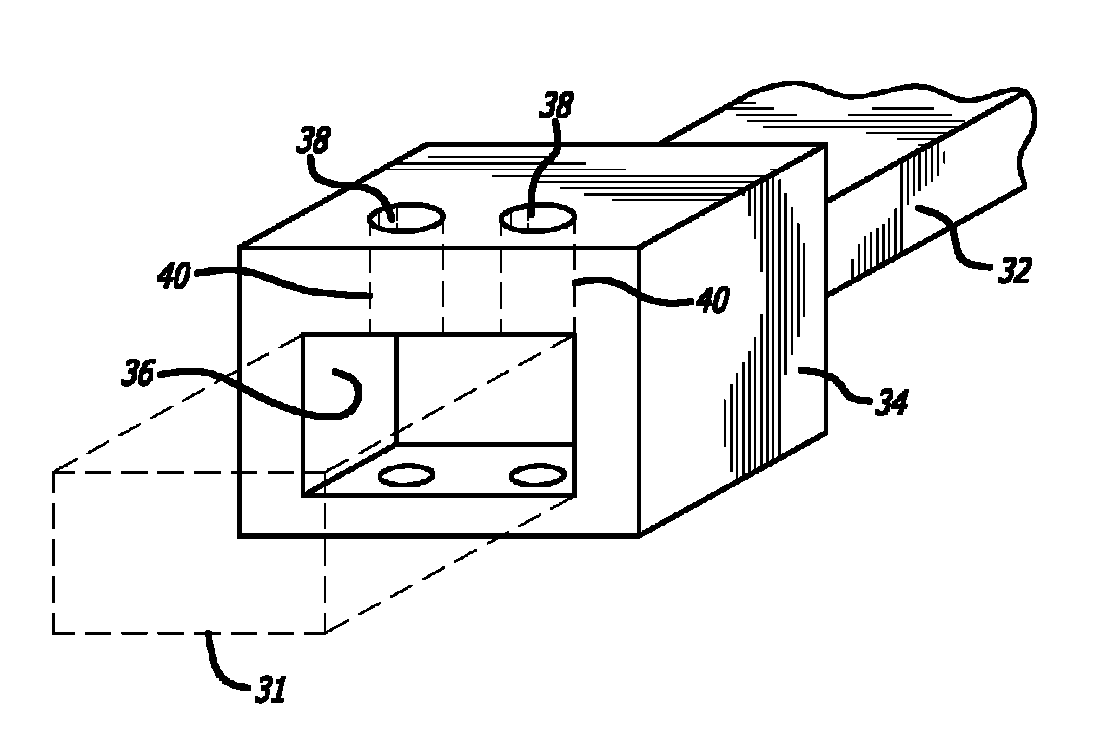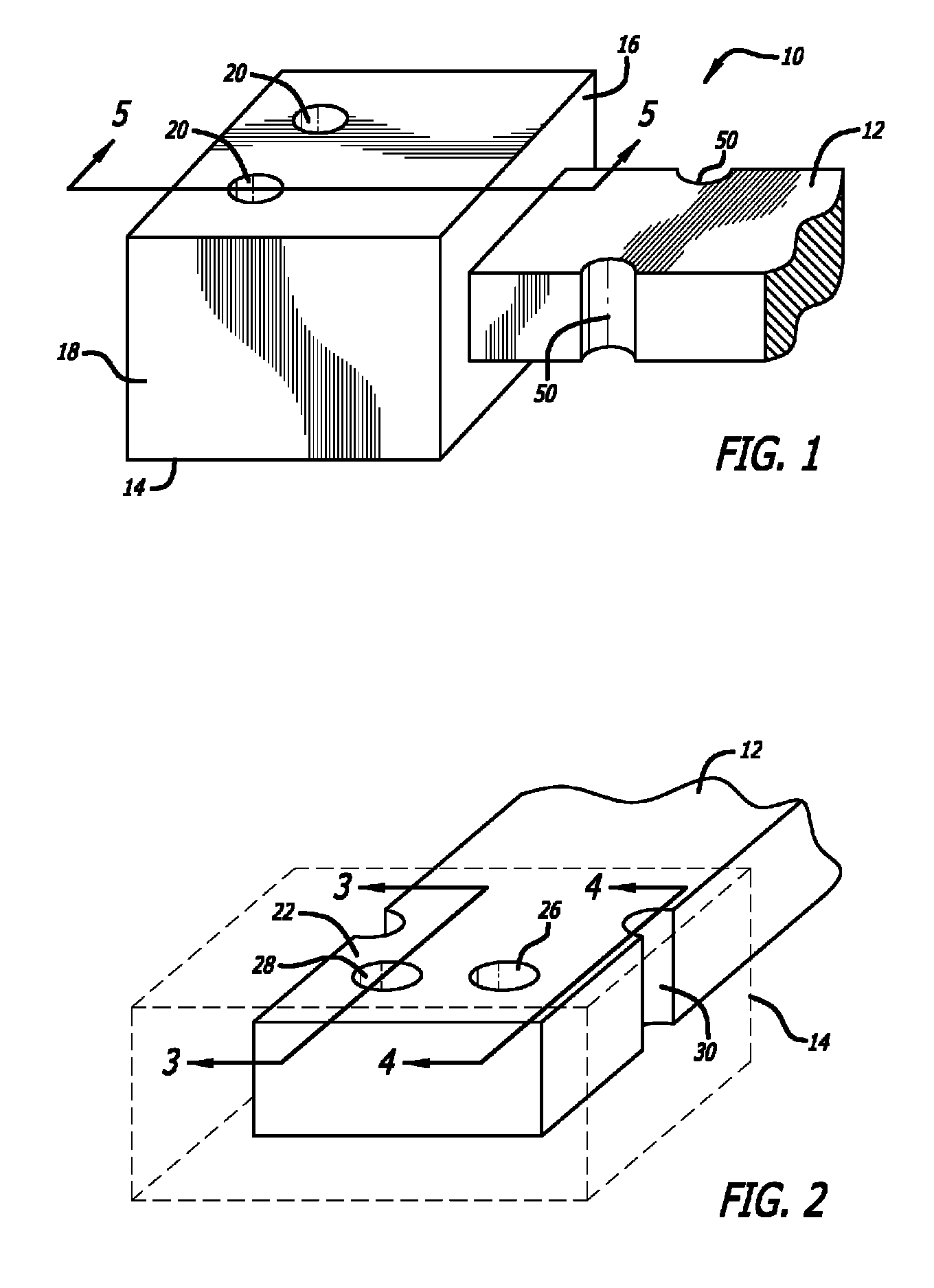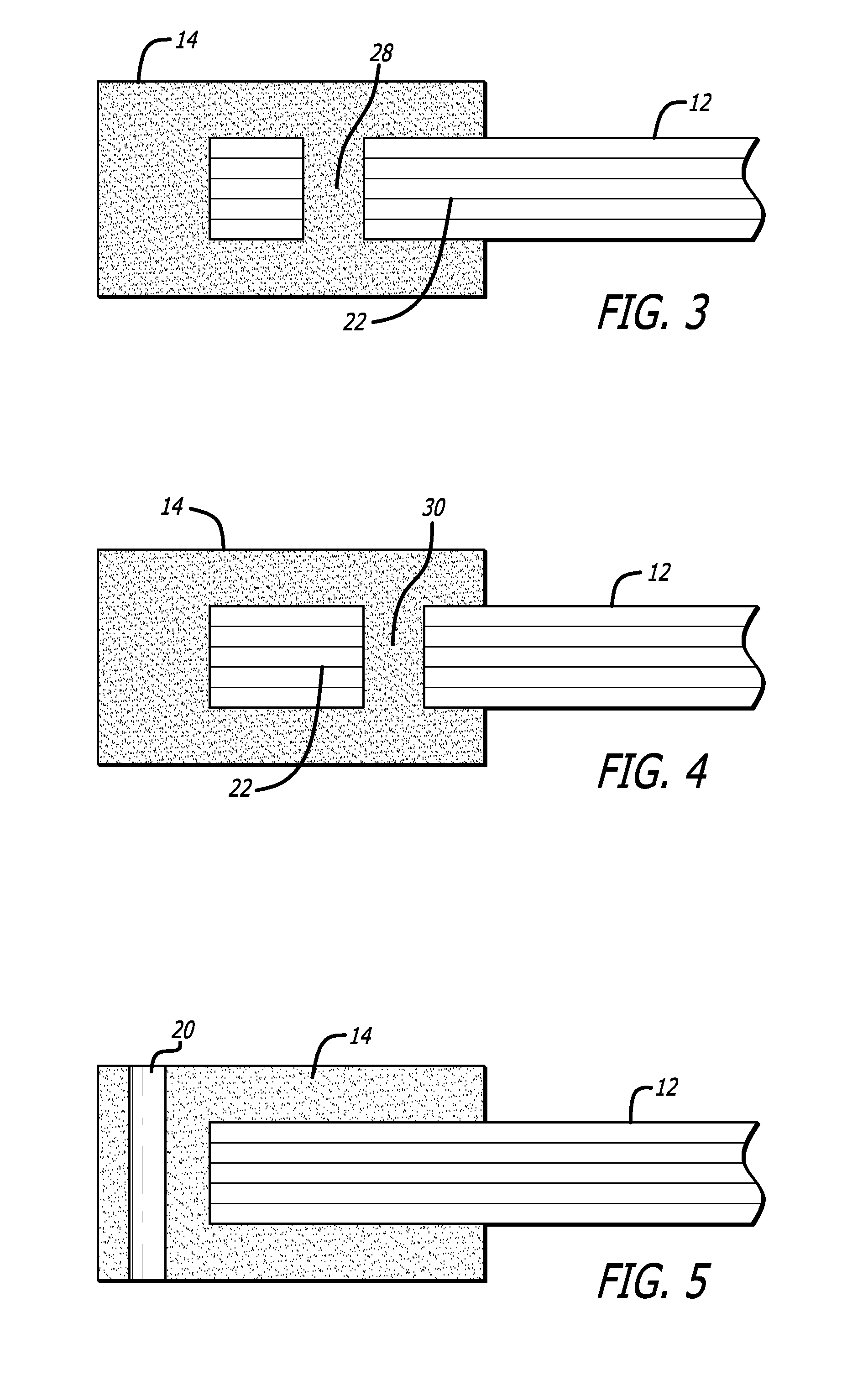Over-molding of load-bearing composite structures
a composite structure and load-bearing technology, applied in the field of composite structures, can solve the problems of fatigue failure, time-consuming and expensive, unidirectional and continuous fibers used in many load-bearing composite structures or elements, etc., and achieve the effects of strengthening connection sites, tighter tolerances, and strong connection
- Summary
- Abstract
- Description
- Claims
- Application Information
AI Technical Summary
Benefits of technology
Problems solved by technology
Method used
Image
Examples
Embodiment Construction
[0024]An exemplary composite structure in accordance with the present invention is shown generally at 10 in FIG. 1. The composite structure 10 includes a load-bearing element 12 and a connection element 14. The connection element of 14 includes a first portion 16 which is molded over the load-bearing element 12. The connection element 14 also includes a second portion 18 which includes holes 20 for connecting composite structure 10 to a support structure or body of the aircraft. Exemplary load-bearing elements include wing spars, propeller blades, struts, floor beams, various links including blocker door links, frames, intercostals, beams, skins, panels, jet engine blades and vanes including outer guide vanes and fan blades.
[0025]As shown in the FIG. 2, the load-bearing element 12 includes an attachment portion 22 over which the connection element (shown in phantom) is molded. Bond-enhancement surfaces are added to the attachment portion 22 in order to provide an increase in the sur...
PUM
| Property | Measurement | Unit |
|---|---|---|
| thickness | aaaaa | aaaaa |
| thickness | aaaaa | aaaaa |
| length | aaaaa | aaaaa |
Abstract
Description
Claims
Application Information
 Login to View More
Login to View More - R&D
- Intellectual Property
- Life Sciences
- Materials
- Tech Scout
- Unparalleled Data Quality
- Higher Quality Content
- 60% Fewer Hallucinations
Browse by: Latest US Patents, China's latest patents, Technical Efficacy Thesaurus, Application Domain, Technology Topic, Popular Technical Reports.
© 2025 PatSnap. All rights reserved.Legal|Privacy policy|Modern Slavery Act Transparency Statement|Sitemap|About US| Contact US: help@patsnap.com



